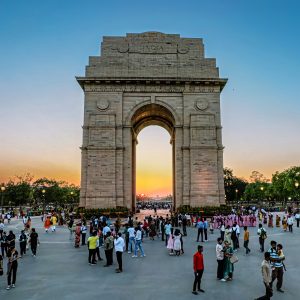Flags and murals as N. Irish pick sides in Middle-East crisis
Belfast, United Kingdom — AFP
Northern Ireland may be thousands of miles from the Middle East, but signs of the current heightened conflict can be seen on the streets of the British province.
Palestinian and Israeli flags flutter in pro-Irish and pro-UK neighbourhoods in Northern Ireland, tapping into its own history of conflict and division that still affects everyday life despite a 1998 peace deal that largely ended violence.
The growing number of flags displayed are supplemented by murals and graffiti showing support for either the Palestinians or Israel, depending on which side of Northern Ireland’s sectarian divide they are located.
The Palestinian health ministry says more than 8,300 people in Gaza, mostly women and children, have been killed.
– ‘Suffered colonialism’ –
On the Falls Road, a main artery in the mostly pro-Irish Western districts of Belfast, Pat Sheehan, a lawmaker with Sinn Fein, the former political wing of the paramilitary IRA, explained that local people feel “empathy” for Palestinians.
“If there’s any nation that can understand the difficulties that the Palestinians are living under now it’s the Irish,” Sheehan said in front of a freshly painted pro-Palestinian mural.
“Ireland has suffered colonialism and occupation for 800 years, there have been many armed uprisings against British rule, and we see Palestinians suffering under similar colonial occupation.”
At a ceremony two weeks ago Sheehan unveiled the mural, which is emblazoned with “Free Palestine” and portrays a clenched fist painted in both Palestinian and Irish colours.
Later the same day, the grey-haired 65-year-old — who survived 55 days on a prison hunger strike in 1981 — addressed a pro-Palestinian rally in central Belfast that drew thousands of sympathizers.
Palestinian flags have long been flown in pro-republican areas, but their numbers have risen dramatically in recent weeks.
– ‘Suffered terribly’ –
Nearby, across a so-called peace line — one of many barriers of concrete and metal that still divide Belfast neighbourhoods 25 years after the Good Friday peace accords — Israeli flags now adorn the pro-UK Shankill Road area in response.
“The unionist community in Northern Ireland has a long-standing affinity and affiliation to the cause of Israel,” said Brian Kingston, a lawmaker with the largest pro-UK party, the Democratic Unionist Party.
“We see Israel as having suffered terribly from terrorism over the years just like we have,” said the bespectacled 57-year-old, who previously performed the largely ceremonial role of Lord Mayor of Belfast.
Earlier that day, Kingston attended a 30th anniversary commemoration of a 1993 IRA bombing of a fish and chip shop on the Shankill Road that killed nine people.
“The IRA and the PLO (Palestinian Liberation Organization) cooperated in international terrorism, sharing expertise. And we stood against that,” he said.
– ‘Picking of sides’ –
Ronit Berger Hobson, an Israeli-born professor in conflict studies at Queen’s University Belfast, said she began researching Northern Ireland and its peace process to learn how it could potentially be applied to the Israel-Palestinian conflict.
“Then I came here and saw all these flags: Palestinian on one street, Israeli ones on the next!” she said at her home near Belfast.
Hobson said the Northern Irish displays of solidarity appear to stem from both sides’ largely misplaced perception of parallels with the conflict between Israel and the Palestinians.
“But this picking of sides, this effort to dress the Israel-Palestinian conflict in the same colours as the one here, somehow doesn’t add up,” she said.
“Conflicts are far more complicated, and just like the one here goes back centuries so does the one between Israelis and Palestinians, but in very different ways.”









